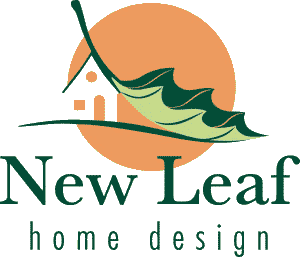This renovation project in northeastern Ohio is a clear demonstration of just how much a house can be transformed. Most A-frame houses are very open, with a cathedral ceiling soaring over the great room and a second floor loft set over the kitchen and bathrooms, but this one was far from open! The rooms were very boxy and from the first floor you couldn’t even tell you were in an A-frame. But our client, a visual artist, could somehow see the potential when he bought it. He envisioned a space pared down to its basic forms where he would have plenty of space to unroll large canvases, and that would connect with its quiet site while still providing privacy.
The basic shape of the exterior remained the same, but the unique forms were emphasized by using a dark siding, so the house seems to be carved out of a single material. The new attached garage has a low slope shed roof, so as not to compete with the gables of the original house.We also positioned the windows and doors carefully to contribute to the composition.
On the interior, we removed the existing floor joists in half of the house to create a great room that shows off the home’s unique shape. The floor joists are replaced by steel cable ties that resist the outward thrust of the rafters, and the new stair provides dramatic views over the space.
The kitchen uses a closet pantry for storage rather than wall cabinets, allowing the sink and range to tuck under the rafters. This provides floor space for the island and keeps the sloped wall behind the sink visible.
The master bedroom suite occupies theL-shaped second floor. We continued the open concept, with the sleeping space and bathing space separated only by the bend of the L. The toilet gets its own compartment for privacy, and the tub is simply tucked around the corner from the shower.
Having the three-dimensional CAD model of the design was key to the process of creating this design. Being able to look at things from multiple angles informed our decisions every step of the way and allowed the homeowner much more input to the design decisions than a process using just two-dimensional drawings.
